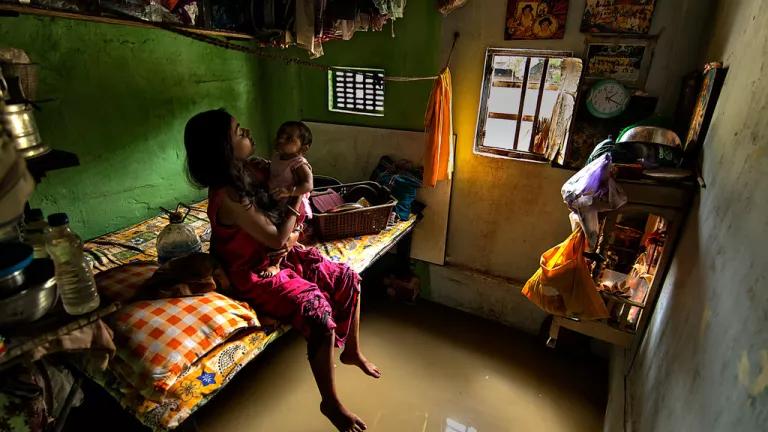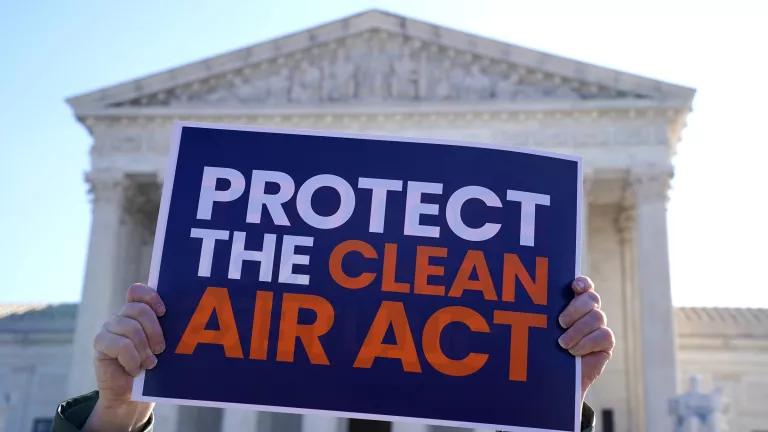Hurricane Cleanup Is Putting Heat on American Workers

Cleaning up after a hurricane is dangerous work. Compared to the gruesome chainsaw injuries and broken bones sending recent hurricane survivors to area hospitals, hot weather may seem like a minor concern to healthy adults. But heat is a serious health threat to people engaged in strenuous activities like clearing trees and hauling mounds of rotting drywall to the curb—especially in Puerto Rico, where Hurricane Maria survivors have no electricity, no cellular service, and no clean water.
Heat is an occupational hazard for anyone who spends extended periods of time outdoors. At least 359 construction workers, landscapers, and other outdoor workers died from heat in the United States from 2000 to 2010. Thousands more miss work each year for heat-related illnesses. The true number is almost certainly higher, as employers and employees frequently under report injuries and deaths and officials often misclassify heat deaths as other medical conditions.
Although the Occupational Health and Safety Administration (OHSA) requires employers to maintain working environments that are “free from recognizable hazards,” there are no specific federal regulations to protect workers from extreme heat. OSHA instead runs a yearly Heat Illness Prevention campaign with the tagline of “Water. Rest. Shade.” A review of 20 cases of heat illnesses and deaths, however, revealed that most employers failed to provide shade or rest.
This lack of protection is particularly problematic against the backdrop of climate change, which is driving an increase in unhealthy heat. Heat wave days have generally gotten more frequent in the United States over the last 35 years, affecting increasingly larger areas of the country. But instead of offering solutions, President Trump and his polluter-allied Cabinet have been busily slashing federal climate and clean energy programs, dismantling climate safeguards, and disbanding advisory committees that contradict the administration’s anti-science views.
Let’s take a closer look at how hot, sticky conditions could affect people picking up the pieces after Hurricanes Maria, Irma, and Harvey.
Disaster Cleanup Workers
Hurricane Harvey created a mess of toxic trash. The storm left an estimated 8 million cubic yards of debris—roughly 800,000 loads in a 10-wheel dump truck—in the Houston area alone, and may have damaged up to 650 energy, industrial, and Superfund sites across Texas and Louisiana. Unfortunately, the protective clothing needed to safely deal with hazardous waste makes it difficult for workers to stay cool when temperatures soar.

In the 11 months after the 2010 BP Deepwater Horizon oil disaster, for instance, cleanup workers suffered more than 1,700 exertional heat illnesses such as fainting and heat exhaustion. Hotter days also increased the risk of injuries on the job, perhaps by making workers dizzy or confused. Over the same period, the workers suffered more than 1,600 acute injuries like cuts and sprains.
According to the Centers for Disease Control, healthy adults in full protective gear should limit or stop work in 90-degree weather—a common condition in Houston.
Military Personnel
Tens of thousands of U.S. military personnel have been deployed to Texas, Florida, and the Caribbean for hurricane rescue and recovery operations. The military considers heat a significant threat to individual health, training, and operations because even mild heat illness can harm the performance of service members.
Like disaster workers, military personnel wear protective clothing and carry heavy loads. In addition, service members have unpredictable rest periods and often are sleep deprived, which increases their sensitivity to heat. In 2016 alone, there were 2,500 cases of heat illness among active component service members worldwide that resulted in lost duty time. More than 400 of those cases were heat stroke. Close to a third of the nearly 12,000 heat illness cases from 2012 to 2016 were at just three Army installations in the Southeast: Fort Benning, Georgia; Fort Bragg, North Carolina; and Fort Jackson, South Carolina.

In addition to continually educating warfighters about the risks of extreme heat, the U.S. military is actively researching technologies and protocols to better prevent and treat heat-related illnesses. The Department of Defense, however, would serve its personnel best by comprehensively planning for the health effects of an increasingly warmer climate.
Construction Workers
Over the longer term, the workers rebuilding Gulf Coast and Caribbean homes, businesses, and roads may be most at risk of heat-related illnesses.
Construction workers accounted for 37 percent of heat-related occupational deaths between 2000 and 2010, more than any other U.S. industry. That’s partly because job sites are often on exposed, elevated surfaces like roofs, and construction involves lots of heat-producing power tools and equipment.
The typical vulnerability of construction workers to heat is amplified by the industry’s aging workforce and shortage of skilled labor. Older age appears to be a major contributor to heat stress during exercise, particularly in workers with chronic illnesses. A study of the Southeast, for instance, found that older workers were less likely than their younger counterparts to visit emergency rooms for heat illnesses, but more likely to end up in the hospital. Unskilled workers are also prone to heat-related work incidents, potentially due to a lack of training or a desire to “prove their worth and impress colleagues and supervisors.”
Furthermore, undocumented immigrants make up a sizable chunk of the U.S. construction workforce—13 percent in 2014. Between limited access to health care and heightened fears of deportation, undocumented construction workers may be reluctant to report potentially deadly symptoms.

Wanted: Action on Climate and Worker Safety
Without action to cut carbon pollution, climate change-fueled heat waves will continue to get worse for our workforce and our economy. By one estimate, the global warming associated with even a moderate pollution scenario could triple the loss of safe daylight working hours in the United States by the 2040s, conservatively translating to a loss of 9 billion person hours.
The present and future health threats of heat indicate that employers and officials can and should do more to protect workers. Unfortunately, the Trump administration’s current disregard for worker safety suggests federal heat safeguards aren’t exactly a priority. In July, the Department of Labor announced it would withdraw nearly 470 proposed OSHA safeguards and delay more than 390 others. One of those delayed regulatory actions was “Emergency Response and Preparedness.”
President Trump has repeatedly promised to stand up for American workers. Just a few months ago, he said, “The wellbeing of the American citizen and worker will be placed second to none—and boy do I mean second to none.” We need the administration to live up to that commitment to citizens and workers now more than ever.




